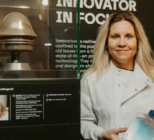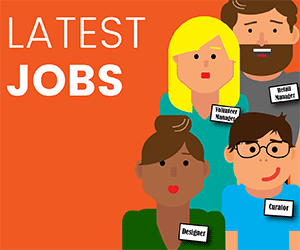Lockdown was, of course, unpleasant in many ways for lots of people. Then again, it did give people far more opportunity to explore their local surroundings. Whether they were working from home or furloughed, people’s natural curiosity needed to be satisfied. After all, there’s only so long you can spend watching television on a loop and stay sane.
With people confined to staying at home and not venturing out, we hit upon the idea that, if people couldn’t come to visit the museums, then we would take the museums to them.
National Museums NI, or NMNI for short, manages four sites: the Ulster Museum (pictured above), Ulster Folk Museum, Ulster Transport Museum and the Ulster American Folk Park. Together, these attractions promote the history, art, science and the culture of the people of Northern Ireland.
Since 2017, we’ve been working with software experts Zengenti to manage our website. Zengenti’s content management system, Contensis, allows us to create different types of content across the site without as much hassle as it would have taken us before.
Bringing culture and history to people’s homes
This is what became our secret weapon with the arrival of Covid, because it put us in a position to be able to create functions on the website that previously there wouldn’t have been the need — or appetite — for. Namely, showcasing exhibits from the museum online. This, in 2019, would have been the antithesis of our aim. We’d switched from encouraging visitors into the museums to opening our doors to more people digitally.
Images of our various collections were some of the key things to include on the website. In total, we have more than 250,000, including artworks, historical artefacts, photographs, vehicles and many other aspects of life in Northern Ireland throughout its history.
Images have often presented us — and undoubtedly other museums — with challenges in the past, just by the sheer volume of them. What’s crucial now is that, whilst we have a specialist software system specific to museums to manage them, it integrates to display them on our website. So, despite the huge number of pictures available, people are able to browse through them easily, learning about the various collections as they would if they visited the museums in person.
The success of this function, and its popularity with members of the public, meant that we felt confident in exploring what else we could offer.
One of the most fascinating things that we have always had is a huge number of experts working at NMNI, and we wanted people visiting the website to be able to learn from their knowledge and insight, in the same way that they would if they were visiting in person.
This led to us including videos of them introducing collections and pieces, explaining how they’re cared for and looked after, and what significance they hold. This would previously have been a time consuming function to build an extra section of the website for, but once the first video page was created, we were easily able to create more by using that as a template, customising it to fit the new content.
The opening up
When the UK began to tentatively open up again for specific functions and activities, we were presented with a new problem. We wouldn’t be able to simply allow visitors in the same unrestricted volumes as we had before, because of the need to maintain social distancing and the strict maximum capacity of the buildings.
We needed to closely control the number of visitors, by using our website as a booking system, where people would need to arrange their visit in advance. This would let us know how many visitors were going to be on a particular site at any one time, and they had to be checked in.
We created a system that integrated seamlessly with both the website and our internal network. It included visitor check-in, online ticketing and the ability to record and monitor the business of each site — not only down to the day, but the specific time.
Thanks to this, we were able to begin opening our museum sites on the 30th July 2020 during the pandemic. Previously, we would have been forced to remain closed because we wouldn’t have been able to manage visitors safely — and spent a huge amount of time creating a way to work around the problem with more conventional systems.
Longterm lessons
The fact that we were able to use our online real estate in so many different ways throughout the Covid pandemic is a major reason why NMNI didn’t suffer from its social effects nearly as much as it could have. The speed with which we could react to the changing scenarios meant we were able to make the best of the situation.
One example of this is how we could alert people to our opening hours, which had to change depending on evolving rules and other factors. Visitors to the website were shown an alert message, telling them the most up-to-date opening times and the latest Covid policies in force. We were able to change this constantly for every museum with just a single centralised process. It’s something that we continue to find one of the most useful features of the website now.
All of this has meant that, whereas the website for any museum has previously simply been about informing people of the site’s location, listing exhibitions and notifying them of upcoming events, its function has now transformed.
By using it to connect with people on a far deeper level, helping them to learn about our specific collections and allowing them to feel safe when they visit, the NMNI website now positions the organisation firmly at the centre of the Northern Irish cultural scene. Kick-started by Covid but now permanently with us, it’s an approach that all our museums will now benefit from.









